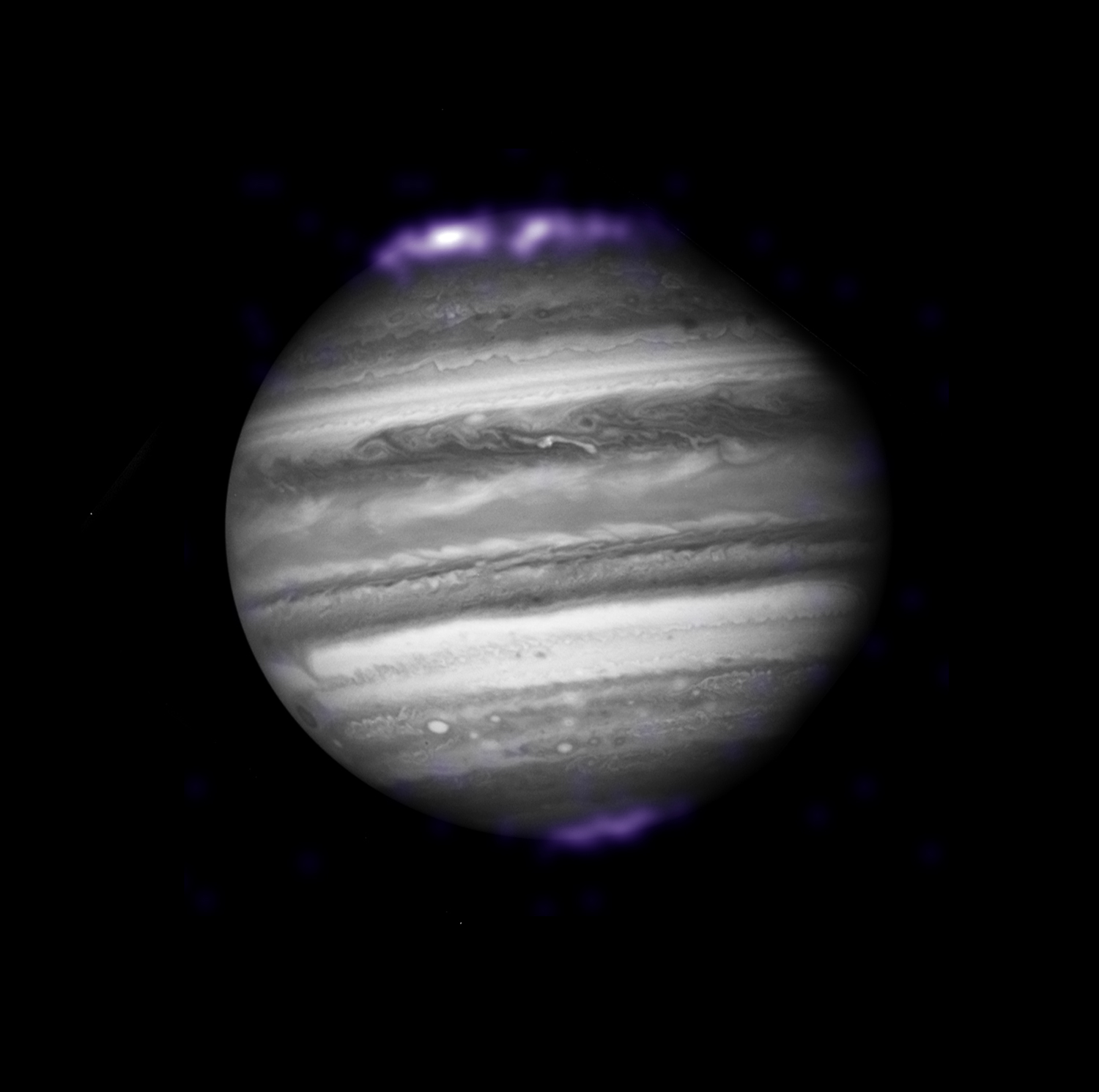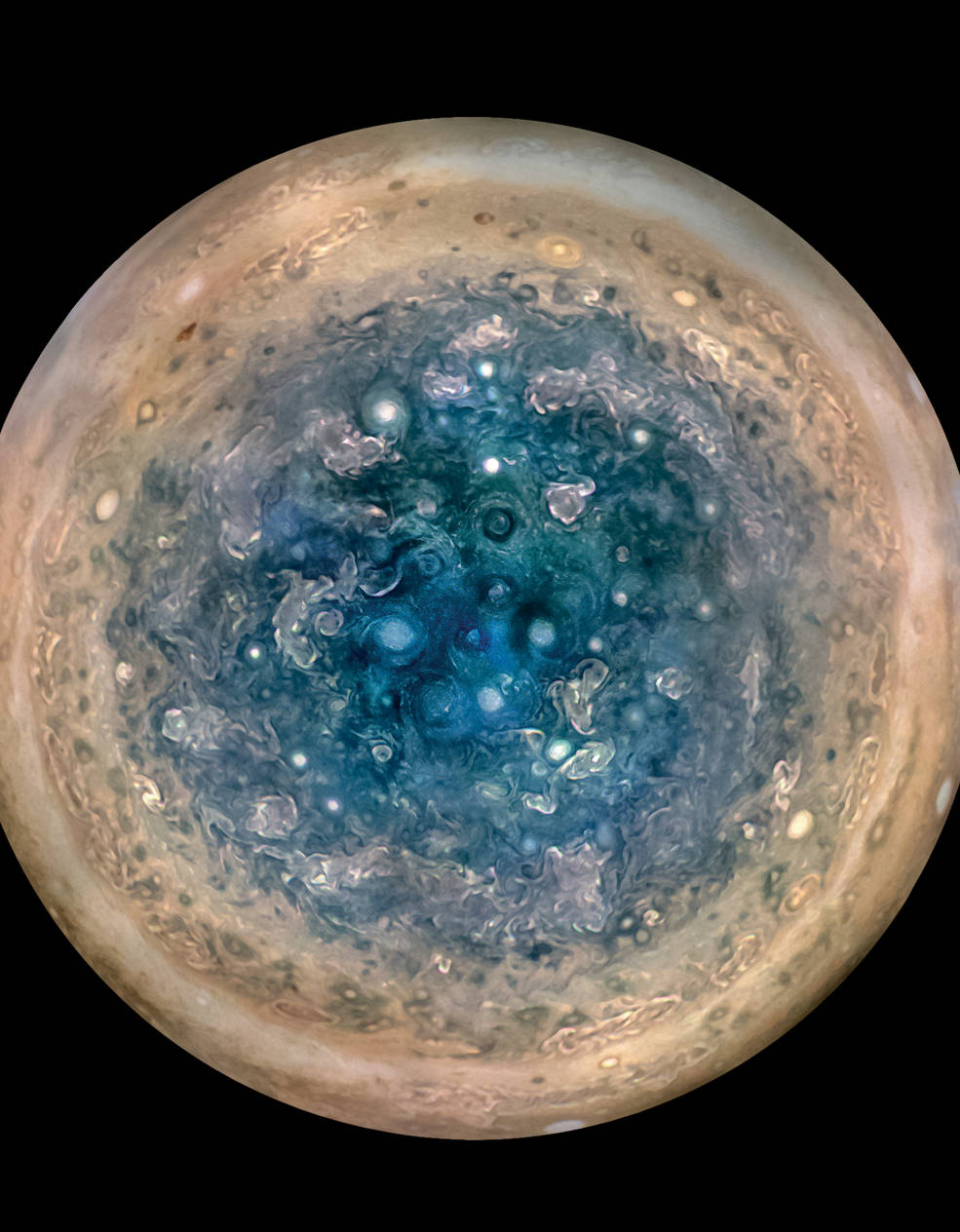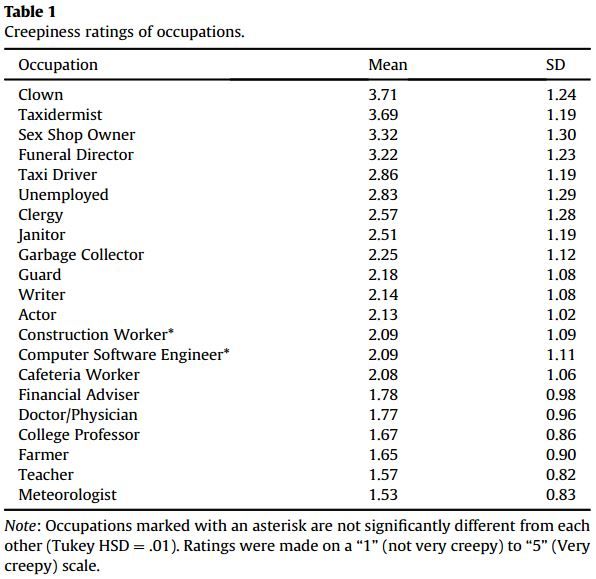
We don’t know the provenance of this delightful newspaper ad posted at reddit. We can assume that it was published around 1865, as the young man was a fan of Andy Johnson, or president Andrew Johnson, who served from 1865 (upon the death off Lincoln), was impeached in 1968, and remained in office until 1969. For an 18-year-old, the writer seems to have his life together, but was probably working too hard so far to meet many young woman. When he says he wants to buy waterfalls, he is most likely referring to a waterfall bustle, as was the style at the time. I would bet that he got responses to this ad. The last line makes him seem cute as well as successful. |
The South Pole Of Jupiter
|
NASA’s Juno probe entered orbit around Jupiter a year ago, and has been gathering data ever since. Now the space agency is releasing spectacular images, such as this one showing Juptier’s south pole. It is a composite of several images, and shows multiple cyclones up to 600 miles in diameter raging around the pole. From NASA:
 As the New Horizons spacecraft approached Jupiter en route to Pluto in February 2007, Chandra took exposures of the gas giant. In this composite image, Chandra data from three separate observations were combined, and then superimposed on an optical image of Jupiter from the Hubble Space Telescope. The purpose of the Chandra observations is to study the powerful X-ray auroras observed near the poles of Jupiter. Related:The Hollow Earth: The Greatest Geographical Discovery In History Made By Admiral Richard E. Byrd |
Whiten Your Teeth By Wrapping Them In Aluminum Foil
Now you don’t have to spend a fortune on expensive appointments at the dental hygienist! Just repeat this simple process twice a week and watch as you get whiter teeth.
The internet is full of life hacks people swear by even though they don’t really understand how the hacks work, and at first glance many of these tricks seem like they won’t work as advertised.
So I was naturally a bit skeptical about a tip involving whitening your teeth by wrapping them in aluminum foil, as anybody who has ever chewed foil would be.
But apparently if you mix some baking soda together with toothpaste, apply the paste to your teeth then wrap your teeth tightly in aluminum foil twice a week the combo will whiten your teeth.
The Psychology Of Creepiness
Creepiness ratings by occupation.
Clowns… of course, are at the very top.
What does it mean to be creepy? We recently looked at cartoon illustrations. Now let’s look at the science of creepiness. Francis T. McAndrew and Sara S. Koehnke of Knox College recently published an article on the subject in New Ideas in Psychology. They define creepiness as not obvious danger, but the ambiguity of danger:
A mugger who points a gun in your face and demands money is certainly threatening and terrifying. Yet, most people would probably not use the word “creepy” to describe this situation. It is our belief that creepiness is anxiety aroused by the ambiguity of whether there is something to fear or not and/or by the ambiguity of the precise nature of the threat (e.g., sexual, physical violence, contamination, etc) that might be present. Such uncertainty results in a paralysis as to how one should respond. In the mugging situation, there is no ambiguity about the presence or nature of threat.
You know what the stranger pointing a knife at you wants. But you aren’t sure about the guy at work who touches you just a bit too much. In modern civilized life, you can’t simply punch him. But neither can you ignore what’s going on. You don’t know how to respond, which is the core problem in creepiness:
It would be considered rude and embarrassing to run away from an odd person who has done nothing overtly threatening, but, on the other hand, it could be perilous to ignore your intuition and remain in an interaction that is dangerous. This ambivalence leaves you frozen in place, wallowing in unease.
A Map of the Land of Rock and Roll.
You begin at your door and journey on a long and winding road. Avoid the boulevard of broken dreams because there are so many potholes. And the traffic on the highway to hell is jam-packed at this time of day. Stay for a while at the Hotel California, which is such a lovely place.


